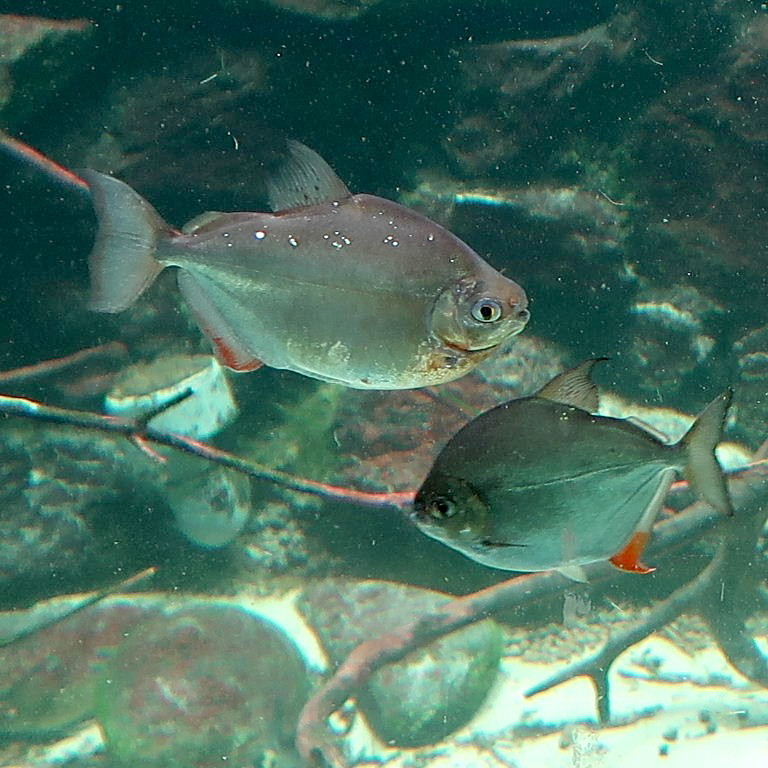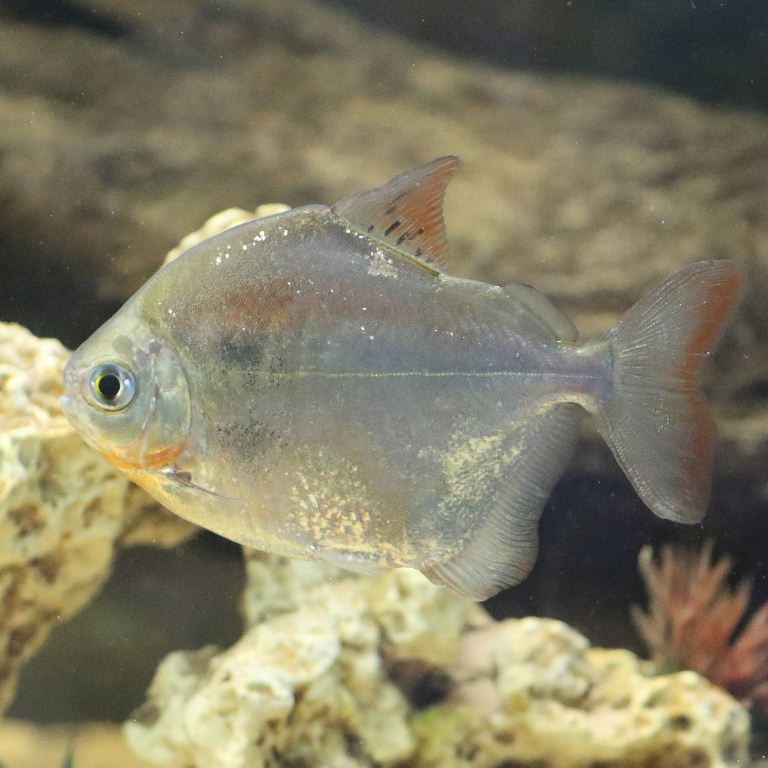Silver Dollar Metynnis argenteus/hypsauchen



Silver Dollar is the name given to several species of fish, mainly in the Metynnis, Myleus, Myloplus and
Mylossoma genera. The name just Silver Dollar without further description is given to both Metynnis argenteus
and the similar-looking Metynnis hypsauchen. The Metynnis genus has a longer adipose (back dorsal) fin than the small
round tetra-like adipose on the other genera.



The Silver Dollar is native to slow-moving, vegetated waters of the Guyana Shield rivers, the Orinoco,
western Amazon and Paraguay basins. They are related to Piranha but mainly vegetarian. They live in peaceful shoals and can grow
to 15cm (5-6 inches) long. Some say that M. hypsauchen has a small black spot just above and behind each eye, which
M. argenteus doesn't have.



Both species are shiny silver disc-like fish. They can develop red around the chin and fins. Older males may develop longer
anal fins. Breeding males may have a black or red border to the tail fin and may develop two dark spots near the pectoral fins. They may also get
some marbling on the flanks. Males are slightly smaller than breeding females. Those with red hooked anal fins above are breeding males but are
not the Red Hook Silver Dollar, which is a separate species (and genus).
Silver Dollar Metynnis altidorsalis



Another Metynnis species also called the Silver Dollar is M. altidorsalis above,
the name refering to its high dorsal fin. It is native to northern and eastern Guiana Shield rivers whereas M. argenteus
is endemic to the Rio Tapajós basin of Brazil.



It has similar shoaling habits but may grow to smaller sizes (12cm long) and seems to have more red
and dark markings on its silver flanks and fins.
Red Spot Silver Dollar Metynnis mola



Some Silver Dollars are said to develop a red spot on the lateral line when breeding. This fish with the wide, red-edged
tail fin is said to be called the Red Spot Silver Dollar, Metynnis mola, - the red spot being a permanent feature which is thought to allow
the species to identify each other. It is native to the Paraguay-Paraná River basin. It grows to 15cm long.

